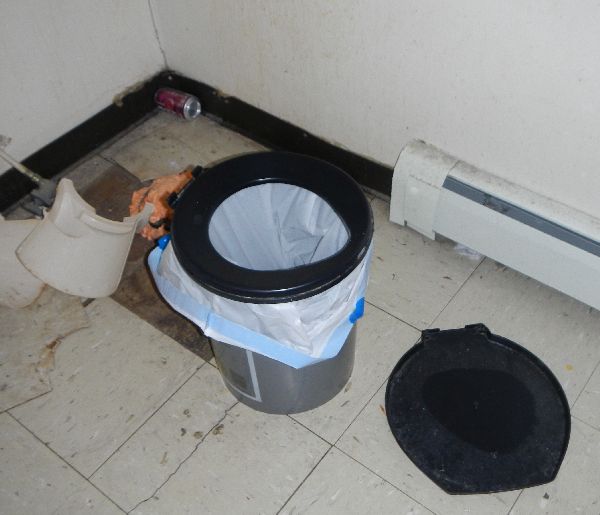Honeybucket Waste

Honeybuckets are used throughout Alaska, even in communities with piped water and sewer systems. Regardless of location, every person who uses a honeybucket, even just once in a while, has the same obligation to properly dispose of that waste. Human waste poses a very real public health risk if it is not disposed of properly, so everyone using a honeybucket must do their part to protect themselves and those around them. While this fact sheet focuses on how to dispose of honeybucket waste, guidelines for protecting your health while handling and transporting honeybucket waste can be found on the Centers for Disease Control and Prevention website.
Management Options
Each community must also do its part to protect public health. One way to do this is to have a clearly communicated procedure for safely disposing of honeybucket waste. Having a community-wide plan will help minimize the health risks honeybucket waste poses to community residents.
The goal in disposing of honeybucket waste is to prevent people and animals from contacting the waste. The best option for a community-wide plan is to have a designated honeybucket disposal facility. Ideally, this is either associated with the community’s sewage lagoon or is located near the sewage lagoon. If a community is replacing or upgrading its sewage lagoon, it should ask the design engineer to include a honeybucket disposal area as part of the lagoon. The next best option is to construct the honeybucket disposal facility near the lagoon. If neither of those two options is possible, the last option is to locate the designated honeybucket disposal trench within the community’s Class III landfill. This should be done with guidance from your ADEC Rural Landfill Specialist.
Outhouse
As an individual, you can help reduce the amount of honeybucket waste in your community by building and using an outhouse at your home if that is possible. Although outhouses are not possible everywhere and may not be the best option for everyone, using an outhouse avoids having to dispose of honeybucket waste and meets the goal of preventing human and animal contact with this waste. Requirements for Outhouses:
Requirements
- Outhouses cannot be located within: 100 feet of any surface water, wetland, or non-public potable water system; or 200 feet of the source water for a public water system.
- There must also be at least: 4 feet between the bottom of the outhouse hole and the seasonal high groundwater table, and 6 feet between the outhouse hole and an absorption field.
HoneyBucket Trench
If a community chooses to create a honeybucket disposal trench for community use, here are some things to consider and the steps to follow:
- To protect the groundwater, you need to have at least 4 feet between the bottom of the trench and the groundwater table. Generally, digging a trench of reasonable depth requires groundwater to be more than 8 feet below the ground surface. If groundwater is less than 8 feet below the surface, contact your ADEC Rural Landfill Specialist to discuss other options.
- You should dig one trench at a time. After digging the trench, some of the excavated soil should be used to make berms around the trench to keep rainwater and snowmelt from flowing into the trench. The rest of the excavated soil should be used to cover honeybucket waste that is placed in the trench, and then to close the trench when it is full. (If needed, let the waste dewater before covering it with soil.)
- A waterproof container of hydrated lime (or “quick lime”) should be stored next to the trench so that lime can be added to the waste after each disposal. Adding lime kills disease-causing germs and reduces odors. It’s important to use hydrated lime; you should not use calcium carbonate or any lime that is meant for gardening.
- To close the trench, you fill the last 12 inches of the trench with the excavated soil. Compacting the soil as it’s placed will minimize future settling. Be sure to mark the location of each closed trench (marking the corners is one option) so you won’t dig a new trench in an area that has already been used.
- After closing one trench, you can dig a new trench and start the process over. Unless you are digging in very loose soil, the new trench can generally be placed within just a few feet of the old trench.
More Information
Review our Operational Guidance document section 5.2 Septage/Honeybucket Waste for more information on safe management methods.
Good Practices (protects public health)
- Using an outhouse if this is possible in your area
- Disposal in a designated honeybucket area at the sewage lagoon
- Disposal in a designated honeybucket trench at the landfill
Bad Practices (can spread disease)
- Storing in your yard until spring break up
- Disposal in the river, in a tundra pond, or in the woods
- Disposal with the rest of the waste at the landfill

 Indicates an external site.
Indicates an external site.